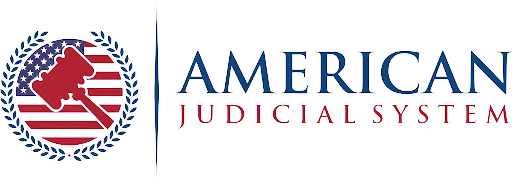The subject of suing an employer for unfair treatment has attracted considerable interest from workers who feel aggrieved by their workplace conditions. This article examines the intricacies of legal recourse for employee mistreatment. It covers available statutory protections, types of claims, procedural steps, and relevant statistical data on employment litigation in the United States. The discussion provides an informative guide for employees evaluating their options.
Can I sue my employer for unfair treatment?
You may initiate legal action if your employer violates employment laws or acts in a manner that significantly undermines your rights. Legal action depends on your jurisdiction, the nature of the mistreatment, and whether employer practices violate federal, state, or local laws. Legal remedies include compensation, policy changes, or reinstatement of rights, but each case requires careful evaluation of its unique facts.
Understanding Unfair Treatment in the Workplace
Unfair treatment typically refers to behaviors or practices by an employer that put an employee at a disadvantage relative to coworkers without a legitimate business reason. Such behavior may include bias based on protected characteristics, retaliation for reporting misconduct, or other discriminatory practices. What constitutes unfair treatment varies based on statutory definitions and jurisdiction-specific interpretations.
Employees may experience unfair treatment in several scenarios:
- Differential treatment in promotions, pay, or job assignments.
- Terms altering job responsibilities without proper explanation.
- Hostile environments triggered by harassment or discrimination.
- Unjustified disciplinary action or termination.
The legal framework is supported by various federal and state laws. For example, Title VII of the Civil Rights Act covers discrimination based on race, color, religion, sex, or national origin. Other laws, including the Americans with Disabilities Act (ADA) and the Age Discrimination in Employment Act (ADEA), also play a role in protecting employees.
Workers must recognize that unfair treatment sometimes overlaps with issues like wrongful termination, hostile work environments, or retaliation. Each of these situations has distinctive legal criteria and factual requirements that influence the strength of a lawsuit.
The Legal Basis for Employment Claims
Employees pursuing a claim must determine whether their case falls under specific legal statutes. Different statutes require distinct elements to succeed in litigation. Common legal claims include:
- Discrimination: Involving race, gender, disability, or age.
- Retaliation: Occurring when an employer reacts adversely because an employee exercised protected rights.
- Harassment: Involving unwelcome conduct such as bullying or offensive remarks.
- Constructive dismissal: When a work environment becomes so intolerable that continued employment effectively forces resignation.
An employee contemplating legal action must gather evidence of unfair treatment. Key aspects include documenting specific incidents, collecting witness accounts, and retaining copies of relevant communications. Evidence plays a critical role in establishing a causal connection between the employer’s conduct and any adverse employment actions.
Defining Unfair Treatment Through Legal Statutes
Each legal claim relies on specific statutory language and judicial interpretations. For instance, Title VII requires that an employee demonstrate a pattern of discriminatory behavior connected to a protected class. Courts study the context of the employer’s policies and the justification provided to evaluate whether genuine discrimination occurred.
State-level protections may offer recourse even when federal claims fall short. Some jurisdictions have broader criteria for defining unfair treatment, providing additional legal remedies and making it easier for employees to pursue claims.
Employers can defend themselves by establishing that decisions were based solely on business needs rather than discriminatory motives. Legal defenses, such as a good-faith performance evaluation process, may limit employer liability. The effectiveness of these defenses often depends on the quality of employee documentation and the established history of workplace practices.
Evaluating Eligibility for a Lawsuit
Employees contemplating legal action should first consider whether they meet the eligibility requirements. Factors to weigh include:
- The specific relief sought (compensation, policy changes, reinstatement, etc.).
- The statute of limitations for filing a claim.
- The potential impact on future employment and personal reputation.
- The costs associated with litigation, including legal fees and time investment.
Employees generally benefit from consulting with an employment attorney. An attorney assesses the case, reviews evidence, and guides employees on whether an administrative complaint or lawsuit is the appropriate course of action.
Beyond legal eligibility, practical considerations matter. An employee may discover that internal grievances or mediation can resolve issues more quickly than litigation. In many cases, employers choose to settle claims to avoid negative publicity and protracted legal battles.
Key Steps Before Filing a Lawsuit
Before filing a lawsuit, employees must undertake preliminary steps to ensure a strong case:
- Documentation: Maintain records of incidents, including emails, memos, and witness statements.
- Internal Complaints: Follow internal grievance procedures and file any necessary formal complaints.
- Reporting to Appropriate Agencies: Consider reporting potential misconduct to bodies such as the Equal Employment Opportunity Commission (EEOC) or the state equivalent.
- Consulting an Attorney: Seek legal guidance to understand the merits of the case and determine available remedies.
A detailed record of incidents may include dates, times, locations, and names of individuals involved. Specific documentation practices bolster the credibility of claims and simplify the legal process when transitioning from internal dispute resolution to external litigation.
Below is a table summarizing key documentation steps:
| Step | Description | Benefit |
|---|---|---|
| Recording Incidents | Note dates, times, and the nature of unfair treatment or discriminatory actions | Provides precise details for legal review |
| Collecting Communications | Retain copies of emails, memos, or texts that reference the incidents | Establishes a paper trail for evidence |
| Gathering Witness Accounts | Document statements from colleagues who observed the incidents | Offers third-party corroboration |
| Filing Internal Complaints | Submit a formal complaint through the company’s grievance process | Demonstrates attempts to resolve internally |
Understanding the Process of Filing a Lawsuit
When an employee decides to pursue legal action, the process commonly begins with filing a complaint with a government agency such as the EEOC in accordance with federal law. The agency investigates the claim and may issue a “right to sue” letter, permitting the employee to file a lawsuit in court.
The litigation process includes:
- Preparation of legal documents.
- Discovery, where each party reviews evidence.
- Court hearings and eventually trial.
- Settlement negotiations or alternative dispute resolution procedures.
Each stage carries financial and emotional burdens. Employees should be prepared for a lengthy process that demands patience and resilience. Legal professionals provide guidance at each phase, ensuring that employees fully understand their rights and available remedies.
Analysis of Workplace Litigation Trends
Recent data indicates that employment-related lawsuits have experienced a measurable shift over recent years. Legal claims related to discrimination, harassment, and retaliation have seen fluctuations tied to public awareness and changes in policy enforcement.
Below is a table detailing recent statistics on employment litigation in the United States:
| Year | Number of Employment Claims Filed | Percentage Change from Previous Year | Notable Trends |
|---|---|---|---|
| 2018 | 24,500 | +2.8% | Increase in claims related to discrimination |
| 2019 | 25,700 | +4.9% | Rise in harassment-related claims |
| 2020 | 23,900 | -7.0% | Reduction due to pandemic-related disruptions |
| 2021 | 26,300 | +10.3% | Surge in retaliation claims linked to remote work |
| 2022 | 27,800 | +5.7% | Increased public awareness on workplace fairness |
These trends show that employment-related litigation remains a significant matter of public interest. Legal professionals and human resource departments often adjust their internal policies to address common issues before they escalate into legal disputes.
Evaluating the Strength of Your Claim
Not every situation of perceived unfair treatment qualifies for successful legal action. Courts assess several elements when evaluating claims:
- Evidence: Concrete recordings or documentation of incidents matter.
- Impact: The degree to which unfair treatment impacted job performance or career progression.
- Employer Justification: The employer’s explanation for the disputed actions.
- Precedent: Similar cases and judicial interpretations found in previous rulings.
Careful analysis of these factors assists both the employee and legal counsel in determining if a strong claim exists. An attorney may decide against litigation if evidence remains weak, advising instead on negotiation or mediation opportunities.
Measures Employers Can Take to Prevent Disputes
Maintaining a comprehensive HR policy that specifies procedures for addressing disputes helps reduce the chance of litigation. Clear policies and training programs contribute to a respectful work environment and promote fairness. Employers can implement the following measures:
- Training sessions addressing discrimination and harassment.
- Clear internal reporting systems.
- Regular review of company policies regarding disciplinary actions.
- Transparent grievance resolution processes.
The implementation of these steps may mitigate potential legal challenges and create an environment that supports employees’ rights.
Detailed Breakdown of Common Claims
A discussion of unfair treatment cases is incomplete without analyzing common areas of dispute. The following sections detail types of claims that may result in a successful lawsuit.
Discrimination Claims
An employee claiming discrimination must identify that their treatment differed from that of their coworkers based on protected characteristics. Cases may involve:
- Race, color, or ethnicity differences in promotion guidelines.
- Gender-based disparities in pay or performance reviews.
- Age discrimination impacting hiring and retention.
- Disability-related accommodations not provided promptly.
Statistical reviews indicate that discrimination claims account for a significant portion of employment lawsuits. In many instances, these claims result in settlements or mandated changes in company policy.
Harassment Claims
Harassment may include verbal abuse, offensive remarks, or other hostile behaviors. Employees may raise claims when treatment creates an environment that interferes with their ability to work effectively. Supporting evidence for harassment claims might include:
- Detailed records of interactions.
- Reports from coworkers who witnessed the behavior.
- Correspondence that supports the claim of a hostile work environment.
Retaliation Claims
An employer may retaliate against employees who report discrimination or harassment. Retaliation takes various forms, such as demotion, increased scrutiny, or unjustified terminations. Employees bringing forward such claims must demonstrate a clear link between their protected activity and the employer’s adverse action.
Constructive Dismissal Claims
Constructive dismissal occurs when employer behavior forces an employee to resign because continued employment becomes untenable. Factors supporting such a claim include:
- Significant changes in job responsibilities without valid reasons.
- Persistent poor treatment causing stress and affecting professional performance.
- Failure to address grievances effectively during internal investigations.
Strategies for Gathering Evidence
Obtaining documented evidence becomes crucial when attempting to prove unlawful actions in court. The following strategies significantly boost the credibility of a claim:
- Keep a Daily Log: Record details immediately after incidents occur. This might include date, time, location, individuals present, and specifics of unwelcome behavior.
- Preserve Written Communications: Save emails, memos, and any texts that might support your account.
- Monitor Performance Evaluations: Retain copies of performance reviews that may show disparity or bias.
- Gather Witness Testimonies: Employees who observed unfair treatment can provide corroborative statements.
- Utilize Technology: Consider using secure personal channels to store digital copies of evidence.
A solid collection of evidence demonstrates the pattern and persistence of unfair practices. Well-maintained records enable legal experts to construct an accurate timeline, simplifying the litigation pathway.
Consulting an Employment Attorney
Legal professionals specializing in employment law play an essential role in evaluating and managing claims of unfair treatment. Their responsibilities include:
- Assessing the merits of the claim based on statutory requirements.
- Advising on whether to pursue mediation, an administrative complaint, or litigation.
- Explaining the potential benefits and drawbacks of each pathway.
- Reviewing gathered evidence to identify strengths and weaknesses in the case.
- Representing the employee in discussions with company representatives or in court.
An attorney’s guidance is particularly valuable when negotiating settlements. They understand the nuances of employment law and negotiate with the aim of securing a favorable outcome with minimal disruption to the employee’s career.
Financial and Emotional Considerations
Taking legal action against an employer brings both financial and emotional burdens. Litigation often requires payment of legal fees, court costs, and, at times, expert witness fees. In some cases, contingency fee arrangements enable employee clients to receive legal services in exchange for a percentage of awarded damages.
Employees typically invest significant amounts of time and energy into legal proceedings. The stress associated with prolonged litigation can affect personal well-being and professional productivity. It becomes crucial to balance the pursuit of justice with the potential long-term impact on mental health and career progression.
Consider the following table comparing the benefits and drawbacks connected with bringing a lawsuit against an employer:
| Factor | Benefit | Drawback |
|---|---|---|
| Pursuit of Justice | Holds employers accountable for misconduct | Involves significant emotional strain |
| Monetary Compensation | May cover lost wages and damages | High litigation expenses may be incurred |
| Policy Improvements | Can lead to better workplace policies | Can impact professional reputation |
| Legal Precedent | Benefits future generations of employees | Lengthy process with uncertain outcomes |
Employees should also weigh the possibility of settling out of court. Settlement discussions offer the potential for quicker resolutions and limit media exposure.
Steps Involved in the Litigation Process
When filing a lawsuit, the process generally covers several stages. Each stage includes distinct tasks:
- Filing the Complaint: Legal documents initiate the lawsuit and outline the claim.
- Discovery Phase: Both parties exchange information and review evidence.
- Mediation or Settlement Negotiations: Early negotiations may result in a mutually acceptable resolution.
- Trial: In cases where no settlement occurs, the matter proceeds to trial.
- Judgment and Appeals: Depending on the trial outcome, decisions may be appealed in higher courts.
Each stage demands thorough preparation and careful legal and strategic decisions. The discovery phase, in particular, often uncovers crucial evidence that impacts negotiations or trial outcomes. An experienced attorney can guide an employee through each phase, ensuring that all relevant claims and defenses are adequately addressed.
Examining Financial Implications and Potential Compensation
Employees considering legal recourse need a clear understanding of potential financial outcomes. Compensation may cover several areas:
- Lost wages due to wrongful termination or demotion.
- Reimbursement for benefits not provided during the period of mistreatment.
- Payments for emotional distress or punitive damages.
- Legal fees incurred during litigation (if successful).
Compensation amounts vary widely, based on the severity of the unfair treatment, the evidence, and prevailing local laws. In some cases, lawsuits aim not only for financial redress but also to initiate changes in discriminatory practices, thus benefiting other employees in the future.
Calculating potential compensation often involves estimates of lost income, career setbacks, and correlated impacts. Legal experts typically use established formulas and past case outcomes as benchmarks to advise clients on expected financial remedies.
Impact of Unfair Treatment on Career Trajectories
Employees who experience unfair treatment face long-lasting effects on their careers. Unjust practices can hinder career progression, reduce job satisfaction, and negatively affect overall professional performance. Moreover, wrongful treatment may result in long-term feelings of undervalue, discouraging employees from seeking advancement opportunities even after legal resolution.
Research shows that incidents of unfair treatment correlate with increased turnover rates. Companies experiencing high turnover often incur additional costs related to recruitment and training. As a consequence, employers often weigh the tangible, financial benefits of maintaining a fair work environment versus the risks and additional expenses stemming from employee dissatisfaction and potential litigation.
Employees considering legal action often weigh the immediate need for redress against the broader implications for their careers. While the litigation process might seem disruptive, addressing unfair treatment legally may help restore self-esteem and support future career growth.
Comparing Legal Systems Across Jurisdictions
Both federal and state legal systems provide avenues for addressing unfair treatment. Federal laws yield protection against discrimination and harassment, while state or local laws may offer expanded rights or lower thresholds for claims. Employees must recognize that claim eligibility and defenses might change based on the governing legal framework.
Some states have enacted statutes that extend coverage beyond federal requirements, thereby allowing claims for practices that might otherwise fall short of federal thresholds. For instance, some state laws address wage disparities more strictly or provide additional remedies for harmful workplace practices.
Legal professionals often recommend that employees consult with an attorney knowledgeable in both federal and state laws. Cross-jurisdictional familiarity becomes important when an employee’s work spans multiple regions or when dispute resolution requires navigating varying legal standards.
Recent Case Studies and Precedents
Analysis of recent cases provides insight into how courts interpret and rule on claims of unfair treatment. Consider the following examples:
Case Study A: An employee alleging discrimination based on gender provided comprehensive documentation of biased performance reviews and differential treatment in project assignments. The court recognized the evidence and awarded significant compensation for lost wages and emotional distress.
Case Study B: A former employee asserted that constructive dismissal resulted from an intolerable work environment. The evidence demonstrated that continuous unfair treatment forced the resignation. The employer settled the case, agreeing to implement revised HR practices.
Case Study C: An employee reported persistent harassment and retaliation after filing an internal complaint. While internal remedies proved ineffective, the legal proceedings led to a successful claim on grounds of hostility and punitive workplace behavior. The case led to broader discussions within the company regarding policy enforcement.
These cases illustrate that detailed documentation, proper legal guidance, and timely filing of claims significantly influence outcomes. The precedence of these rulings shapes how future employment disputes are handled.
Alternative Dispute Resolution and Mediation
Sometimes, employees and employers opt for alternative dispute resolution (ADR) methods to resolve workplace conflicts without resorting to full-scale litigation. Mediation or arbitration often leads to satisfactory outcomes faster and helps maintain workplace relationships. In many cases, ADR methods prevent further escalation while addressing valid grievances.
ADR involves a neutral mediator who assists both parties in reaching an agreement. Arbitration, on the other hand, entails a more formal process where an arbitrator makes a binding decision. Many companies include mandatory arbitration clauses in employment contracts. Employees must verify whether such clauses limit their legal avenues before pursuing litigation.
In many scenarios, ADR provides privacy and reduces the negative publicity associated with prolonged legal battles. While settlement terms achieved through ADR might differ from court judgments, they frequently include structured remedies that benefit both parties.
The Role of Human Resources in Preventing Unfair Treatment
Human Resources (HR) departments play a pivotal role in fostering a just and respectful workplace. Effective HR practices help prevent disputes from escalating. Key responsibilities of HR include:
- Developing comprehensive workplace policies.
- Conducting periodic training on ethical behavior and discriminatory practices.
- Establishing transparent complaint mechanisms.
- Acting promptly on employee grievances.
- Monitoring workplace culture and adjusting policies as needed.
Companies that invest in proactive HR practices often witness lower incidences of claims related to unfair treatment. Internal conflict resolution not only benefits individual employees but also enhances overall company productivity and morale.
Employee Rights and Protections Under Federal Law
Federal statutes provide significant protections to employees who face unfair treatment. For instance:
- Title VII of the Civil Rights Act protects against discrimination in hiring, promotion, and other employment decisions.
- The Americans with Disabilities Act requires employers to provide reasonable accommodations for employees with disabilities.
- The Age Discrimination in Employment Act safeguards the rights of employees over 40.
- The Occupational Safety and Health Act ensures workplace safety standards.
These statutes empower employees by providing legal grounds to challenge unfair treatment. Courts rely heavily on the protections afforded by these laws, particularly in cases that involve clear patterns of discriminatory behavior or retaliation.
When evaluating claims, legal experts compare documented evidence against the statutory rights secured by federal law. Employees must present a clear timeline and documented instances of mistreatment to support their legal claims.
Steps for Employers to Strengthen Their Legal Position
Employers must conduct regular audits of workplace practices to avoid potential claims of unfair treatment. Strong internal policies and transparent procedures flatten potential legal risks. Measures employers may adopt include:
- Routine reviews of performance evaluation criteria.
- Clear documentation of disciplinary actions and promotions.
- Open channels of communication for employees experiencing concerns.
- Third-party mediation services in conflict resolution.
Such administrative measures help create a reliable record of healthy workplace practices, thereby mitigating the risks of litigation. Employers that maintain detailed documentation of job-related decisions often find it easier to defend against claims of unfair treatment.
Balancing Workplace Harmony With Legal Repercussions
Striking a balance between maintaining a productive workplace and fulfilling statutory obligations remains a challenge for many companies. While employees have legal rights, employers must articulate clear business justifications for their decisions. Resolving disputes amicably often saves both parties extended legal disputes and fosters a more harmonious work environment.
Professional mediation may present a valuable opportunity for both employers and employees to voice their concerns while arriving at balanced solutions. The process encourages transparency and accountability from both sides.
Expert Opinions and Legal Advice
Legal professionals provide nuanced perspectives on workplace disputes. Many legal analysts suggest that employees first explore internal resolution mechanisms before pursuing litigation. They emphasize the importance of comprehensive documentation and understanding the employer’s policies.
One expert commented, “Employees should consult legal experts who help navigate through the complexities of employment laws. A clear understanding of your rights can guide you in determining when litigation is necessary.” Another noted that a balanced approach often results in settlements that benefit both the employee and employer.
Employees must also be aware that legal contexts evolve over time. Shifts in public policy, court rulings, and regulatory changes may affect the outcome of cases. Staying informed about these changes empowers employees to make knowledgeable decisions about filing claims.
Frequently Asked Questions on Unfair Treatment Claims
Below are some frequently asked questions to provide clarity:
What constitutes unfair treatment?
Unfair treatment includes any workplace behavior or decision that violates accepted legal standards, such as discrimination or harassment, or actions that unfairly affect an employee’s job duties or compensation.
How do I know if I have a valid case?
A valid case rests on documented evidence, compliance with internal complaint procedures, and the connection of these actions with a breach of statutory rights. Consulting a qualified attorney clarifies these aspects.
What is the statute of limitations?
The statute of limitations varies by state and the specific claim. Many discrimination claims must be filed within 180 days to 300 days from the incident, although details differ depending on jurisdiction and specific legislation.
How do settlements compare to court rulings?
Settlements often deliver compensation and may lead to policy changes without the lengthy process of a trial. Court rulings may establish clear legal precedents and often lead to more publicized outcomes.
Can internal resolutions affect litigation?
Employees who follow internal grievance procedures and document their experience may strengthen their legal claims. Courts often view evidence of attempted internal resolution as supportive when determining liability.
Guidance for Future Workplace Practices
Both employees and employers benefit from learning how to address and prevent unfair treatment. Employees must be aware of their rights and proactive in documenting experiences. Employers, in contrast, should invest in training and clear policy communication to maintain a harmonious workplace. Legal experiences serve as critical learning points for organizations and contribute to broader systemic improvements in workplace practices.
Understanding the legal framework, gathering substantial evidence, and consulting knowledgeable experts all contribute to a well-prepared case. Careful documentation, transparent internal processes, and prompt internal resolution mechanisms frequently improve outcomes and reduce the need for litigation.
Considering the Broader Impact of Unfair Treatment Litigation
The pursuit of legal recourse for unfair treatment extends beyond individual cases. Successful litigation often draws attention to underlying systemic issues at organizations. Employers may need to re-assess hiring practices, review promotions, and implement additional training to prevent recurrence of similar issues. Such changes help to cultivate a just environment and support long-term organizational improvements.
The outcomes of litigation also have implications for the broader industry. When one case achieves success, it prompts other employees to examine their rights and encourages organizations to proactively adopt fair practices. These developments help enhance overall workplace standards.
Evaluating Risks and Benefits of Litigation
Before pursuing legal action, employees must evaluate several key areas:
- Evidence Strength: Unsubstantiated claims are less likely to succeed.
- Legal Costs: Litigation can be expensive and time-intensive, though contingency arrangements may ease the financial burden.
- Professional Relationships: The impact on future employment opportunities cannot be overlooked.
- Public Exposure: Court cases can sometimes lead to public scrutiny, affecting the reputations of both employees and employers.
By carefully weighing these factors, employees can decide whether litigation serves their best interests. Legal advice often emphasizes that while litigation provides a platform for redress, alternative dispute mechanisms may sometimes yield better results with fewer adverse consequences.
Conclusion
This overview offers an in-depth look into the question, “Can I sue my employer for unfair treatment?” It explains the legal foundations of employment claims, outlines the necessary steps for initiating legal action, and presents data to support the importance of a well-documented process. Employees who believe they have endured unjust treatment have multiple avenues to consider. With clarity on proven legal frameworks, relevant documentation, and expert advice, workers can decide if litigation best meets their needs or if alternative resolution mechanisms provide a more suitable remedy.
Navigating these matters successfully often depends on the preparedness of the employee and the thoroughness of the documentation collected. Ultimately, employees benefit from acting decisively when faced with unfair treatment. Legal recourse offers a mechanism to address wrongs, prompt policy reassessment, and reaffirm the importance of fairness in every aspect of employment. Employees must carefully assess their individual circumstances, review all available options, and seek guidance from experienced professionals who understand the specifics of employment law.
Through detailed analysis and discussion, this article elucidates the critical factors involved when employees confront unfair treatment. It reinforces the message that taking early action, documenting incidents meticulously, and engaging professional legal counsel play central roles in successfully addressing disputes. With well-explained statutory protections and a clear description of evidence-gathering strategies, interested individuals gain practical insights into the complexity of legal procedures.
Legal processes often present challenges, yet they offer pathways to rectify unjust situations. Legal remedies can lead not only to individual redress but also to improved corporate practices, ultimately benefiting the workforce as a whole. As litigation continues to be an avenue for addressing workplace injustices, the collective efforts to hold employers accountable contribute to better and more equitable employment conditions for everyone.
Employees should weigh their decisions carefully, understanding that litigation is one of several available options. With this comprehensive guide, individuals can gain a clearer understanding of their rights, the legal foundations underpinning employment claims, and the steps necessary to prepare for any legal action. Despite the inherent complexity of these issues, maintaining clear and precise records while consulting legal experts remains the cornerstone of resolving claims of unfair treatment effectively.
The data and case studies discussed here serve as valuable references for workers who suspect unfair treatment in their workplaces. They illustrate how detailed documentation and informed legal strategies can fortify a case. As employment litigation remains prevalent, this guide assists readers in acknowledging the multiple dimensions involved in such disputes.
For anyone encountering a hostile or discriminatory work environment, the decision to proceed with legal action must be informed by careful evaluation. Employees gain from understanding that the law provides several routes for remedying unfair treatment and that proactive documentation and adherence to internal protocols can significantly support their cases in both administrative and judicial settings.
This article aims to provide clarity on the often complex subject of suing an employer for unfair treatment. Employees should feel empowered by the knowledge that legal frameworks are in place to protect their rights. Even though the road to justice can be demanding, a well-prepared case stands a better chance of resulting in a fair outcome that ultimately benefits both the claimant and the workplace environment.
By adopting a proactive stance, understanding relevant legal provisions, and consulting with legal professionals, employees increase their chances of attaining a resolution that not only compensates for past mistreatment but also fosters improved policies in the employer’s organization.
In light of the extensive discussion presented, workers exploring legal recourse will find reassurance in knowing that evidence, careful documentation, and professional legal advice remain invaluable tools. The comprehensive steps outlined in this article aim to help readers make informed decisions that support their rights and contribute to creating fairer workplace practices.
Employees should continue to monitor updates in employment law, review internal grievance policies periodically, and seek professional advice at the earliest sign of unfair treatment. As more cases are documented and resolved through legal channels, the cumulative effect may encourage widespread improvements across industries, ultimately benefiting all employees who deserve a respectful and just work environment.
This detailed guide strives to serve as an essential resource for any employee questioning, “Can I sue my employer for unfair treatment?” The careful analysis of legal processes, practical evidence collection tips, and the strategic considerations provided help demystify the challenges of pursuing litigation. Awareness of legal options remains central to fostering an environment where injustice no longer goes unchallenged.
Readers are encouraged to utilize the information provided here as a stepping stone to gain further insights into the legal landscape. Additionally, engaging with legal professionals can tailor the general guidelines discussed in this article to individual circumstances, ensuring that every employee can confidently navigate any dispute regarding unfair treatment.
By staying informed and prepared, employees can advocate for their rights and contribute to the continued evolution of fair workplace practices. This guide, rich with detailed statistics, case analyses, tables summarizing essential data, and strategic advice, offers a pathway to making well-considered decisions in the face of workplace challenges.
With effective preparation and proactive legal consultation, those affected by unfair treatment can pursue outcomes that secure not only personal justice but also influence broader, systemic change in employment practices. The legal recourse defined by our judicial system empowers employees to stand firm against practices that diminish workplace fairness.
In closing, understanding the nuances of suing an employer for unfair treatment empowers workers to protect their professional integrity. The article provides actionable insights regarding the steps, legal assessments, and strategies needed when encountering disputes that impact both career progression and personal well-being. Workers should approach their situation with clear evidence, knowledgeable legal counsel, and realistic expectations regarding the litigation process.
As more employees exercise their rights through legal channels, collective pressure may lead to improved standards in work environments, ensuring companies adhere to rigorous policies that promote fairness and equity. Such positive changes benefit everyone involved and affirm that every worker deserves treatment that meets legal standards and ethical expectations.
This comprehensive discussion reiterates the critical aspects of addressing unfair treatment. By considering every factor and thoroughly preparing before legal action, employees increase their chances of achieving a satisfactory outcome. The journey through the legal process, while arduous, may ultimately offer a redemptive and transformative path that secures fairness in the workplace.
Readers now have access to a detailed guide that illuminates the complexities of legal claims against employers for unfair treatment. Armed with documented evidence, practical strategies, a clear understanding of legal rights, and robust statistical support, employees can confidently navigate the challenging terrain of employment litigation.
Every step taken to review and address unfair treatment in the workplace contributes to a broader culture of accountability and respect. May this information serve as an essential resource for anyone seeking recourse and encourage a future where all employees experience an environment free from undue mistreatment.










